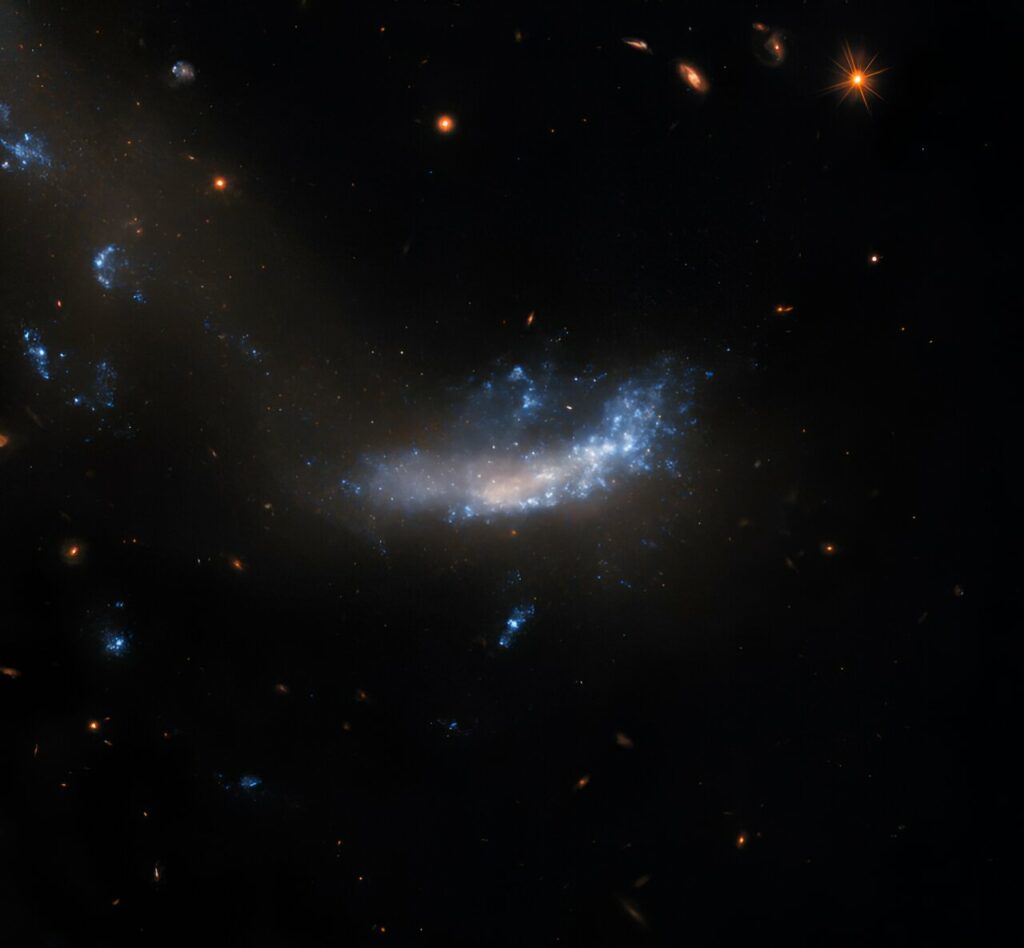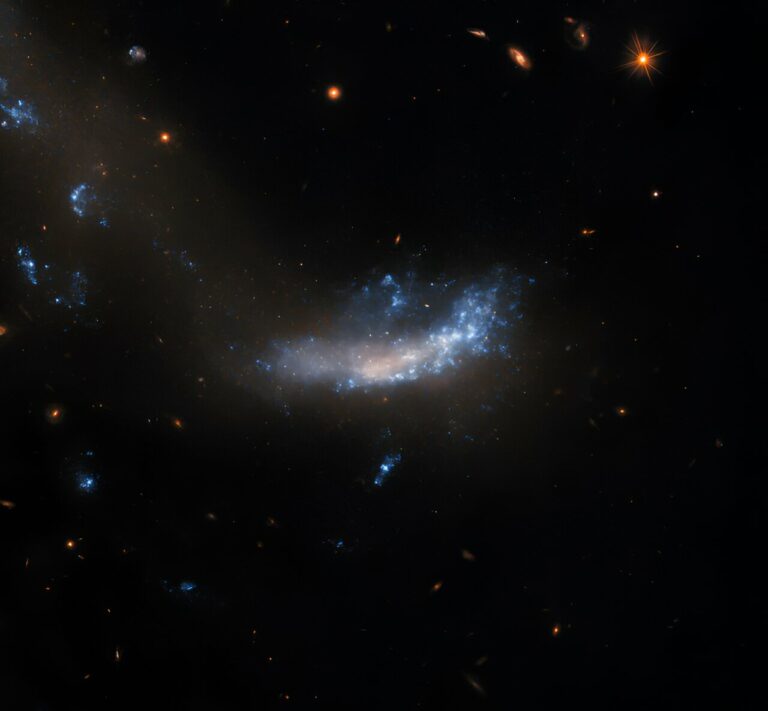picture: Hubble Observes a Galactic Supernova Location
UGC 5189A, a small galaxy located in the constellation Leo, is the subject of this image. The NASA/ESA Hubble Space Telescope observed this galaxy to study the supernova explosion known as SN 2010jl, which occurred 150 million light-years away. SN 2010jl is particularly noteworthy due to its exceptional luminosity, emitting over 2.5 billion times more visible energy than our sun over a three-year period.

Even after supernovae become undetectable, studying the environments in which they occurred remains intriguing. These studies offer valuable insights to astronomers, as supernovae can occur for various reasons. Understanding the conditions that trigger these events enhances our knowledge. Additionally, follow-up studies provide a deeper understanding of the immediate aftermath of supernovae, including their impact on surrounding gas, dust, and the remnants they leave behind.
Since 2010, Hubble has observed UGC 5189A on multiple occasions. This image represents data collected during three recent studies of UGC 5189A conducted by Hubble. These studies also investigated other galaxies in relatively close proximity, approximately 100 million light-years away, that have recently experienced supernovae.
This article is republished from PhysORG under a Creative Commons license. Read the original article.
Do not forget to share your opinion with us to provide you with the best posts !




0 Comments